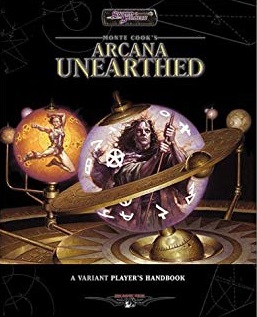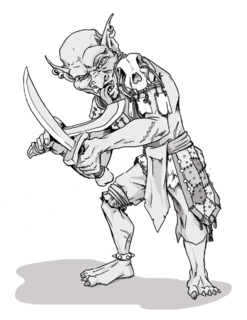| Sourcebook | Kits |
|---|
| Age of Heroes Campaign Sourcebook | Companion, Hero, Hoplite |
| A Mighty Fortress Campaign Sourcebook | Clansman, Courtier, Forester, Picaro, Preacher, Protector of the Faith, Scholarly Mage, Sea Dog, Vagabond |
| Arabian Adventures | Ajami, Askar, Barber, Beggar-Thief, Cleric of the Faith Pragmatic (Pragmatist), Cleric of the Faith Ethical (Ethoist), Cleric of the Faith Moral (Moralist), Corsair, Desert Rider, Elemental Mage, Faris, Hakima, Holy Slayer, Kahin, Mamluk, Matrud, Mercenary Barbarian, Merchant-Rogue, Mystic, Outland Priest, Outland Warrior, Rawun, Sa’luk, Sorcerer, Sha'ir |
| Chronomancer | Guide, Historian, Seer, Traveler |
| City of Gold | Clown, Fetishist, Trader, Hunter, Azupozi Healer, Bent Priest, Pueblo Priest, Sunwatcher |
| Defilers and Preservers - The Wizard of Athas | Advanced Being, Arena Wizard, Cerulean, Chasseur, Earth Defender, Exterminator, Free Wizard, Illusionist, Mercenary, Restorationist, Shadow Wizard, Tribal Wizard, Necromancer |
| Diablo II: The Awakening | Amazon, Barbarian, Necromancer, Paladin, Sorcerer |
| Elves of Evermeet | Elven Knight, High Mage, Skinwalker, Totem-sister, Unicorn Rider |
| Jakandor - Isle of Destiny | Artificer, Finder, Galvanist, Porter, Render, Sandman, Shadow Mage, Warden, Dilettante, Bandit, Chirurgeon, Companion, Guildsman, Scribe, Cultist, Jurist, Pantheist, Philosopher, Thanhotepic, Guardian |
| Masque of the Red Death | Cavalryman, Charlatan, Dandy, Detective, Explorer/Scout, Journalist, Labourer, Medium, Metaphysician, Parson, Physician, Qabalist, Sailor, Scholar, Shaman, Spiritualist |
| Maztica Campaign Set | Eagle Knight, Hishnashaper, Jaguar Knight, Plumaweaver |
| Of Ships and the Sea | The Fathomer |
| Player's Option: Skills & Powers | Acrobat, Amazon, Animal Master, Assassin, Barbarian, Beggar, Cavalier, Diplomat, Explorer, Gladiator, Jester, Mariner, Merchant, Mystic, Noble, Outlaw, Peasant Hero, Pirate, Pugilist, Rider, Savage, Scholar, Scout, Sharpshooter, Soldier, Smuggler, Spy, Swashbuckler, Thug, Weapon Master |
| The Complete Barbarian's Handbook | Brushrunner, Brute, Dreamwalker, Flamespeaker, Forest Lord, Islander, Medicine Man, Plainsrider, Ravager, Seer, Spiritist, Witchman, Wizard Slayer |
| The Complete Bard's Handbook | True Bard, Blade, Charlatan, Gallant, Gypsy-bard, Herald, Jester, Jongleur, Loremaster, Meistersinger, Riddlemaster, Skald, Thespian, Dwarven Chanter, Elven Minstrel, Gnome Professor, Halfling Whistler |
| The Complete Book of Dwarves | Animal Master, Axe For Hire, Battlerager, Champion, Clansdwarf, Crafts Priest, Diplomat, Entertainer, Ghetto Fighter, Hearth Guard, Highborn, Locksmith, Outcast, Pariah, Patrician, Pest Controller, Rapid Response Rider, Ritual Priest, Sharpshooter, Temple Guard, Trader, Vermin Slayer, Vindicator, Wayfinder |
| The Complete Book of Elves | Archer, Bladesinger, Collector, Elven Minstrel, Herbalist, Huntsman, Infiltrator, Spellfilcher, Undead Slayer, War Wizard, Wilderness Runner, Windrider |
| The Complete Book of Gnomes & Halflings | Bandit, Bilker, Breachgnome, Buffoon, Burglar, Cartographer, Forestwalker, Goblinsticker, Healer, Homesteader, Imagemaker, Leaftender, Mercenary, Mouseburglar, Oracle, Rocktender, Sheriff, Smuggler, Squire, Stalker, The Archer, Trader, Traveler, Treetender, Tumbler, Tunnelrat, Urchin, Vanisher |
| The Complete Book of Humanoids | Hedge wizard, Humanoid Bard, Humanoid Scholar, Mine Rowdy, Oracle, Outlaw Mage, Pit Fighter, Saurial Paladin, Scavenger, Sellsword, Shadow, Shaman, Tramp, Tribal Defender, Tunnel Rat, Wandering Mystic, War Priest, Wilderness Protector, Witch Doctor |
| The Complete Book of Necromancers | Archetypal Necromancer, Anatomist, Deathslayer, Philosopher, Undead Master |
| The Complete Druid's Handbook | Adviser, Avenger, Beastfriend, Guardian, Hivemaster, Lost Druid, Natural Philosopher, Outlaw, Pacifist, Savage, Shapeshifter, Totemic Druid, Village Druid, Wanderer |
| The Complete Fighter's Handbook | Amazon, Barbarian, Beast-Rider, Berserker, Cavalier, Gladiator, Myrmidon, Noble Warrior, Peasant Hero, Pirate/Outlaw, Samurai, Savage, Swashbuckler, Wilderness Warrior |
| The Complete Gladiator's Handbook | Arena Champion, Beast Trainer, Blind fighter, Convict, Gladiatorial Slave, Jazst, Montare, Professional Gladiator, Reaver |
| The Complete Ninja's Handbook | Consort, Eliminator, Intruder, Lone Wolf, Pathfinder, Punisher, Ravager, Shadow Warrior, Spirit Warrior, Stealer-In |
| The Complete Paladin's Handbook | True Paladin, Chevalier, Divinate, Envoy, Equerry, Errant, Expatriate, Ghosthunter, Inquisitor, Medician, Militarist, Skyrider, Squire, Votary, Wyrmslayer |
| The Complete Priest's Handbook | Amazon Priestess, Barbarian/Berserker Priest, Fighting-Monk, Nobleman Priest, Outlaw Priest, Pacifist Priest, Peasant Priest, Prophet Priest, Savage Priest, Scholar Priest |
| The Complete Ranger's Handbook | Beastmaster, Explorer, Falconer, Feralan, Forest Runner, Giant Killer, Greenwood Ranger, Guardian, Justifier, Mountain Man, Pathfinder, Sea Ranger, Seeker, Stalker, Warden |
| The Complete Sha’ir's Handbook | Astrologer, Clockwork Mage, Digitalogist, Ghul Lord, Jackal, Mageweaver, Mystic of Nog, Spellslayer |
| The Complete Spacefarer's Handbook | Aperusa, Arcanist, Astrologer, Astronomer, Corsair, Courier, Crusader, Diplomat, Evangelist, Frontiersman, Geomancer, Harlequin, Imposter, Marine, Medicus, Merchant, Missionary, Privateer, Salvager, War Mage |
| The Complete Thief's Handbook | Acrobat, Adventurer, Assassin, Bandit, Beggar, Bounty Hunter, Buccaneer, Burglar, Cutpurse, Fence, Investigator, Scout, Smuggler, Spy, Swashbuckler, Swindler, Thug, Troubleshooter |
| The Complete Wizard's Handbook | Academician, Amazon Sorceress, Anagakok, Militant Wizard, Mystic, Patrician, Peasant Wizard, Savage Wizard, Witch, Wu Jen |
| The Crusades Campaign Sourcebook | Monastic Warrior (Templar/Hospitaller), Pardoner, Warrior Priest |
| The Glory of Rome Campaign Sourcebook | Charioteer, Charlatan-Thief, Christian Priest, Gladiator, Military Tribune, Mithraic Priest, Philosopher-Mage, Priest of the Mysteries, Priest of the State Religion, Roman Legionary, Roman Politician, Roman Witch, Street Fighter |
| The Planewalker's Handbook | Planewalker Warrior, Planewalker Wizard, Planewalker Priest, Planewalker Rogue, Abyssal Warrior, Floating Sorcerer, Hinterland Bandit |
| Savage Baronies / Red Steel Campaign Setting | Inheritor, Local Hero, Noble, Spy, Swashbuckler, Beast Rider, Defender, Gaucho, Honorbound, Myrmidon, Savage, Militant, Mystic, Wokan, Fighting Monk, Shaman, War Priest, Webmaster, Bandit, Filcher, Scout, Herald, Skald, Trader |
| The Will and the Way | Auditor, Beastmaster, Mercenary Psionicist, Noble Psionicist, Psiologist, Sensei, Tribal Psionicist |
|





